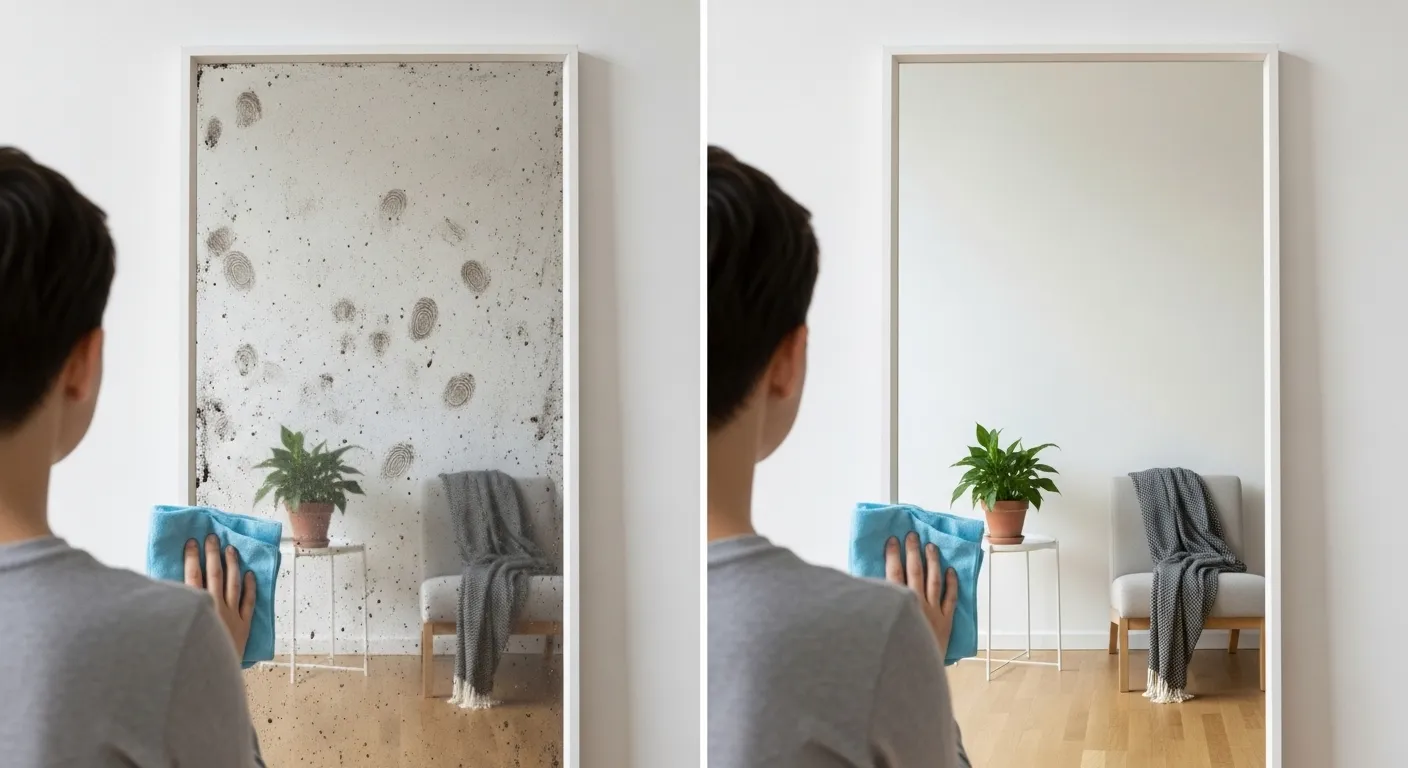
Recipe 3: The Streak-Free Glass & Mirror Cleaner
Streaky windows and mirrors can make an otherwise clean room feel unfinished. Many commercial glass cleaners have a strong ammonia scent and contain chemicals you might not want to spray around your home. This simple two-ingredient recipe cuts through fingerprints and haze, leaving behind nothing but a crystal-clear shine. It’s a perfect example of how DIY cleaners can outperform their store-bought counterparts.
The Recipe: The Secret to a Perfect Shine
The key to a truly streak-free finish is using the right kind of water. While the ratio is the same as our all-purpose cleaner, one small change makes a big difference.
Ingredients:
1 part Distilled White Vinegar
1 part Distilled Water
Instructions:
In a clean spray bottle, combine the distilled water and distilled white vinegar. It is highly recommended to use distilled water for this recipe. Tap water contains minerals like calcium and magnesium, and when the water evaporates, these minerals are left behind on the glass, creating those frustrating white spots and streaks. Distilled water has had all these impurities removed, so it evaporates cleanly.
A little mini-math: For a 16-ounce spray bottle, this means you will use 1 cup (8 ounces) of distilled water and 1 cup of distilled white vinegar. Label the bottle “Glass Cleaner” to avoid mix-ups.
How to Use It for a Flawless Finish
Technique matters just as much as the cleaner itself when it comes to glass. Follow these steps for professional-looking results.
Step 1: Choose the Right Time. Avoid cleaning windows in direct, hot sunlight. The heat causes the cleaning solution to evaporate too quickly, which is a primary cause of streaks. An overcast day or a time when the window is in the shade is perfect.
Step 2: Prepare Your Tools. You will need two clean, dry microfiber cloths. It’s important that they are free of lint and any residue from fabric softeners, which can cause smearing. One cloth will be for washing, and the other for drying and buffing.
Step 3: Spray Lightly. Lightly mist a section of the mirror or window with your cleaning solution. Don’t drench the glass; a little goes a long way. If you’re cleaning near wood frames or sills, it’s safer to spray the cleaner directly onto your cloth instead of the glass to prevent drips from damaging the wood.
Step 4: Wipe in a Pattern. Using your first microfiber cloth, wipe the glass clean. Many professional window cleaners use an “S” pattern or a “Z” pattern, starting from the top and working their way down. This ensures you cover the entire surface without just pushing dirt around.
Step 5: Buff to a Shine. Immediately after wiping, take your second, completely dry microfiber cloth and buff the glass until it is dry and sparkling. This final buff is the secret to removing any last traces of moisture and ensuring a streak-free shine.
Common Pitfalls and How to Avoid Them
If you’re still seeing streaks, it’s likely due to one of these common issues.
Using Dirty Cloths: If your cloth is already dirty, it will just transfer that grime back onto the glass. Start with clean cloths every time.
Too Much Cleaner: Over-saturating the glass makes it harder to wipe away completely before it dries, leading to residue and streaks.
Hard Water Residue: If you skipped the distilled water, the minerals from your tap water are likely the culprits. It’s worth the small extra cost for a gallon of distilled water from the grocery store.
Pre-existing Film: Sometimes glass has a waxy film from years of using commercial cleaners. You may need to wash the window once with a simple solution of warm water and a drop of dish soap, rinse it with a squeegee, and then use your vinegar spray for the final polish.

















